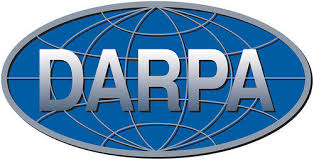DARPA Continues 3D Printing Research

June 3, 2015
Nearly every advance in technology is investigated for practical applications by the defense industry. Additive manufacturing (AM) offers to solve a number of supply chain management (AKA logistics) problems and already has a limited presence in the field. If NASA can print a wrench in space, the Army should be able to produce similar tools wherever they are needed.
Along with the ability to build bespoke parts in the field, DARPA is also interested in quantifying the resilience of 3D printed parts. If a tool breaks every third time it’s used, building that part with AM doesn’t make sense from a material or time-saving point of view. In order to study potential problems and solutions offered by AM, DARPA created the Open Manufacturing program.

“The Open Manufacturing program is fundamentally about capturing and understanding the physics and process parameters of additive and other novel production concepts, so we can rapidly predict with high confidence how the finished part will perform,” said Mick Maher, program manager in DARPA’s Defense Sciences Office. “The reliability and run-to-run variability of new manufacturing techniques are always uncertain at first, and as a result we qualify these materials and processes using a blunt and repetitive ‘test and retest’ approach that is inevitably expensive and time-consuming, ultimately undermining incentives for innovation.”
DARPA is working on a number of different projects for the Open Manufacturing program. To assist with research, the defense agency has set up two Manufacturing Demonstration Facilities (DMF); one at Penn State and the other at the Army Research Laboratory. The Penn State facility is focused mainly on AM, while the DMF at the Army Research Laboratory is investigating bonded composites.
Current research is focused on AM processes, with DARPA researching two metal printing processes, and one for bonded composites. From the DARPA website:
- The Rapid Low Cost Additive Manufacturing (RLCAM) effort aims to use first-principles and physics-based modeling to predict materials performance for direct metal laser sintering (DMLS) using a nickel-based super alloy powder. In DMLS a laser melts the metal powder to additively build a 3D product.
- The Titanium Fabrication (tiFAB) effort aims to combine physics- and data-based informatics models to determine key parameters that affect the quality of large manufactured structures, such as aircraft wings. tiFAB is a method that uses an electron beam instead of a laser to melt spool-fed titanium wire to build up a structure layer by layer.
- The Transition Reliable Unitized Structure (TRUST) effort aims to develop data informatics approaches for quantification of the composite bonding process to enable adhesives alone to join composite structures.
Source: DARPA
Subscribe to our FREE magazine, FREE email newsletters or both!
About the Author
John NewmanJohn Newman is a Digital Engineering contributor who focuses on 3D printing. Contact him via [email protected] and read his posts on Rapid Ready Technology.
Follow DE





